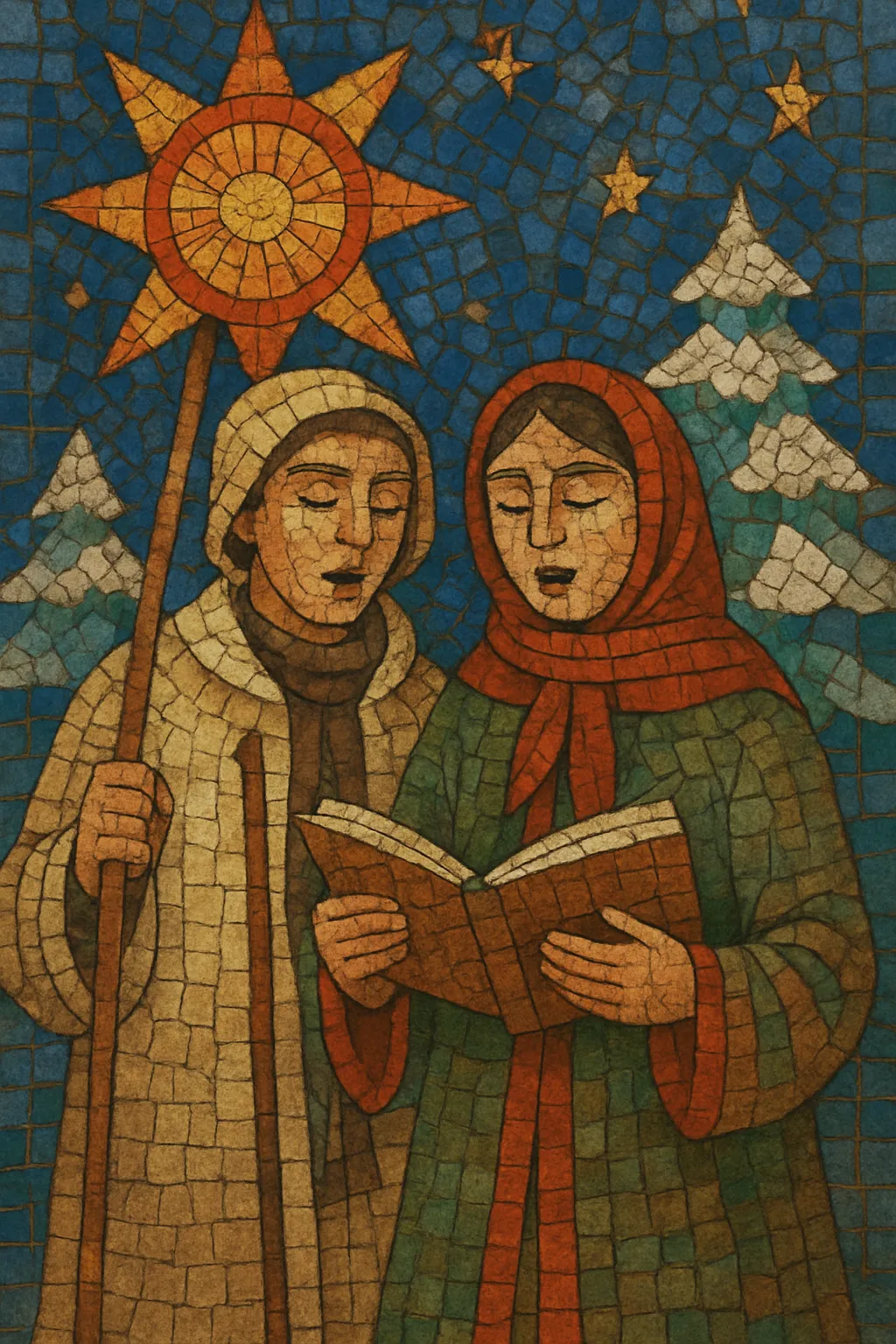Colindă is the Romanian tradition of ritual Christmas caroling, performed by groups of carolers (cete de colindători) who go from house to house singing formulaic, often archaic strophic songs during the winter holidays.
Musically, colinde favor narrow-range, modal melodies (often Aeolian or Dorian), unison or heterophonic textures with drones, and steady, syllabic declamation that matches the Romanian poetic meter. Texts weave Christian Nativity imagery with vestiges of pre-Christian midwinter rites, featuring refrains like “leru-i ler” or “florile dalbe,” blessings for the household, and calls for prosperity.
Colindă likely crystallized between late medieval and early modern times, blending pre-Christian midwinter customs with Eastern Christian (Orthodox) liturgical aesthetics. The practice centers on organized groups of mostly young men, led by a vătaf (leader), who visit households after Christmas Eve, performing set repertoires in exchange for gifts (colaci, nuts, apples) and offering blessings for health and abundance.
From the 16th–19th centuries, colinde circulated orally, developing regional variants. In Transylvania and Maramureș, multi-part or heterophonic textures and drones became typical; elsewhere, monophony with ornamented solo lines persisted. The modal palette (Dorian/Aeolian) and narrow ambitus supported memorization and collective participation.
National awakening and scholarly interest led to systematic collection by folklorists and ethnomusicologists such as Tiberiu Brediceanu, Sabin Drăgoi, Constantin Brăiloiu, and Béla Bartók. Choral arrangers adapted colinde for concert performance, bringing them to urban audiences and codifying repertory staples (e.g., “O, ce veste minunată,” “Steaua sus răsare,” “Trei păstori,” “Viflaim”).
During the communist period, overtly religious content was curtailed in official media, but village practice continued, and choirs maintained stylized arrangements. After 1989, a broad revival occurred: recordings by folk interpreters and professional choirs flourished, and colindă regained public ritual presence and national symbolic value.
Today, colindă lives in parallel forms: village caroling with traditional cete, concert-hall choral arrangements, and popular recordings. Regional ensembles, sacred choirs, and individual artists continue to refresh the repertoire while preserving its ritual function of seasonal blessing and communal cohesion.


